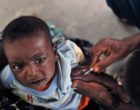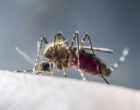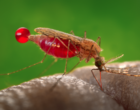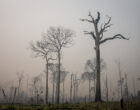
World Malaria Day: talking about malaria everyday
April 25th 2024 marks World Malaria Day, a time when the disease is highlighted in the media and brought to the general public’s attention for a… Read more »

April 25th 2024 marks World Malaria Day, a time when the disease is highlighted in the media and brought to the general public’s attention for a… Read more »
Have you ever found yourself eyeing a mosquito as it buzzed around, seemingly fixated on making you its next meal? It’s an intricate dance of… Read more »

The new, approved malaria vaccine has moved to a national distribution in Cameroon, marking a small but mighty milestone in… Read more »

Cabo Verde, a beautiful archipelago of West Africa in the central Atlantic Ocean, has been declared malaria-free by the World… Read more »

A new study by Oke et al. looks at a non-destructive way to measure Plasmodium parasites in mosquitoes over periods of time.

Krisztian Magori shares some of the news items he picked up recently about the WHO recommendation of new malaria and dengue… Read more »

In June 2023, concerning news of locally acquired malaria was reported in the US – the first such cases in twenty years. At the… Read more »

Mosquitoes use scent cues to locate humans to feed upon, but do some humans smell more appealing than others, and if so, why?

A new study in Malaria Journal examines the challenges of studying and preventing the disease in rural Cambodia and points to… Read more »

Researchers use socioeconomic and ecosystem degradation variables to improve the predictive accuracy of disease risk models for… Read more »